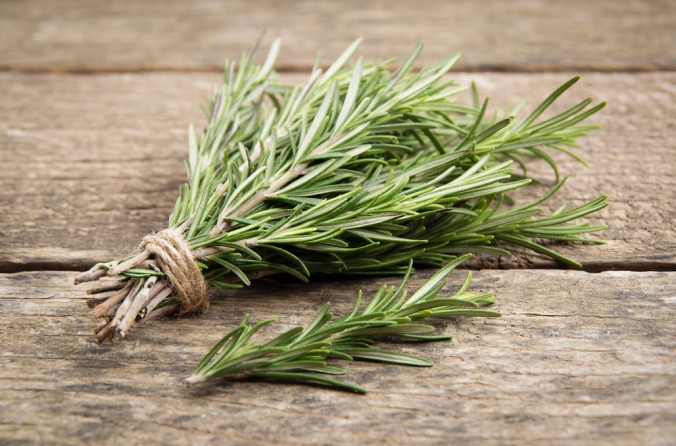
As part of nature’s offerings, there are many amazing herbs that can not only support our health, but also add some great tastes to a wide range of dishes. Even better, you can grow them at home whether you have some pots in the garden or a sunny windowsill.
It’s also great to blend the herbs into homemade teas in order to get a more concentrated effect, as relatively small amounts are used in cooking.
This National Gardening Week Clinical nutritionist Suzie Sawyer shares her top five herbs you can grow at home.
Bay

Bay leaves are probably one of the most common herbs grown at home in pots as they are also very decorative. And you only need a couple of bay leaves in a stew for example, so the bay tree will still retain its beauty!

Bay is an essential ingredient in the seasoning bouquet garni which is frequently used in soups, stews and casseroles. It is particularly delicious when used in slow-cooked dishes, so the flavours truly permeate though the ingredients. Bay is used to stimulate and aid digestion so can help reduce any potential digestive upsets from a dish that maybe slightly fatty, such as a meat stew.
Chives

Chives are primarily cultivated for culinary uses and are easy to grow in small spaces as long as it’s nice and sunny and you provide them with plenty of water to keep the soil moist. Chives also appreciate regular trimming, and they certainly provide something pretty to look at on the windowsill.

Part of the onion family, chives are great for adding to potato dishes (especially potato salad), egg dishes, salads and soups. Medicinally, chives have been found to help stimulate appetite after illness and but also aid digestion. They can add some great flavour without causing some of the digestive upsets that onions trigger in some people.
Mint

Mint is probably one of the easiest herbs to grow at home as it’s very resilient and is actually better grown in a pot on its own because it really likes to take over other plants. Additionally, it does come back year after year with some light trimming and also provides some pretty flowers. Mint likes plenty of sunlight but also needs moisture.

Mint is extremely versatile in many dishes but is also really coming into its own with Pimm’s season on the horizon! However, it’s great added to both sweet dishes (ice creams) or savoury (lamb). Mint helps with digestion and is great for calming the stomach after food if made into an infusion (just pour boiling water over the leaves). Mint also stimulates the immune system so may help to ward off a cold.
Rosemary

With its amazing aroma, you’ll always be reminded of the Mediterranean if you grow rosemary at home. It’s great added to lamb or chicken dishes but also works well as a flavouring in roasted vegetables, especially potatoes or sweet potatoes.

Rosemary is an amazing antioxidant so helps protect the body from aging and degenerative diseases. Additionally, it helps to balance and stimulate the nervous and circulatory systems.
Basil

Another herb with a wonderful aroma, basil will also remind you of Spanish and Italian cooking, particularly in tomato dishes. It is great grown on windowsills as it doesn’t like frost but can be grown outside during the summer months.

Basil is known to be a natural tranquiliser, a tonic that can help calm the nervous system, as well as aiding digestion. Interestingly, whilst basil really adds flavour to many Italian styled dishes, if used with raw tomatoes and mozzarella cheese (a traditional caprese salad), with a little olive oil drizzled, all the fat-soluble nutrients in tomatoes become much more absorbable for the body. Therefore, it’s a win-win situation when adding basil.
So, why not start your own herb garden and you’ll have delicious flavours and ready-made health benefits on tap too!
Stay well.
FOR MORE GREAT DIET AND LIFESTYLE ADVICE:
Sign up to receive our blog and get a weekly dose of the latest nutrition, health and wellness advice direct to your inbox.
Follow us on Twitter @feelaliveuk for nutrition, lifestyle and well-being tips.
Visit us at www.feelaliveuk.com for the latest offers and exclusive Alive! content.
Follow and Chat with Suzie on Twitter @nutritionsuzie
For everything you need to know about vitamins, minerals and herbs visit our sister site Herbfacts
All images: Shutterstock



















